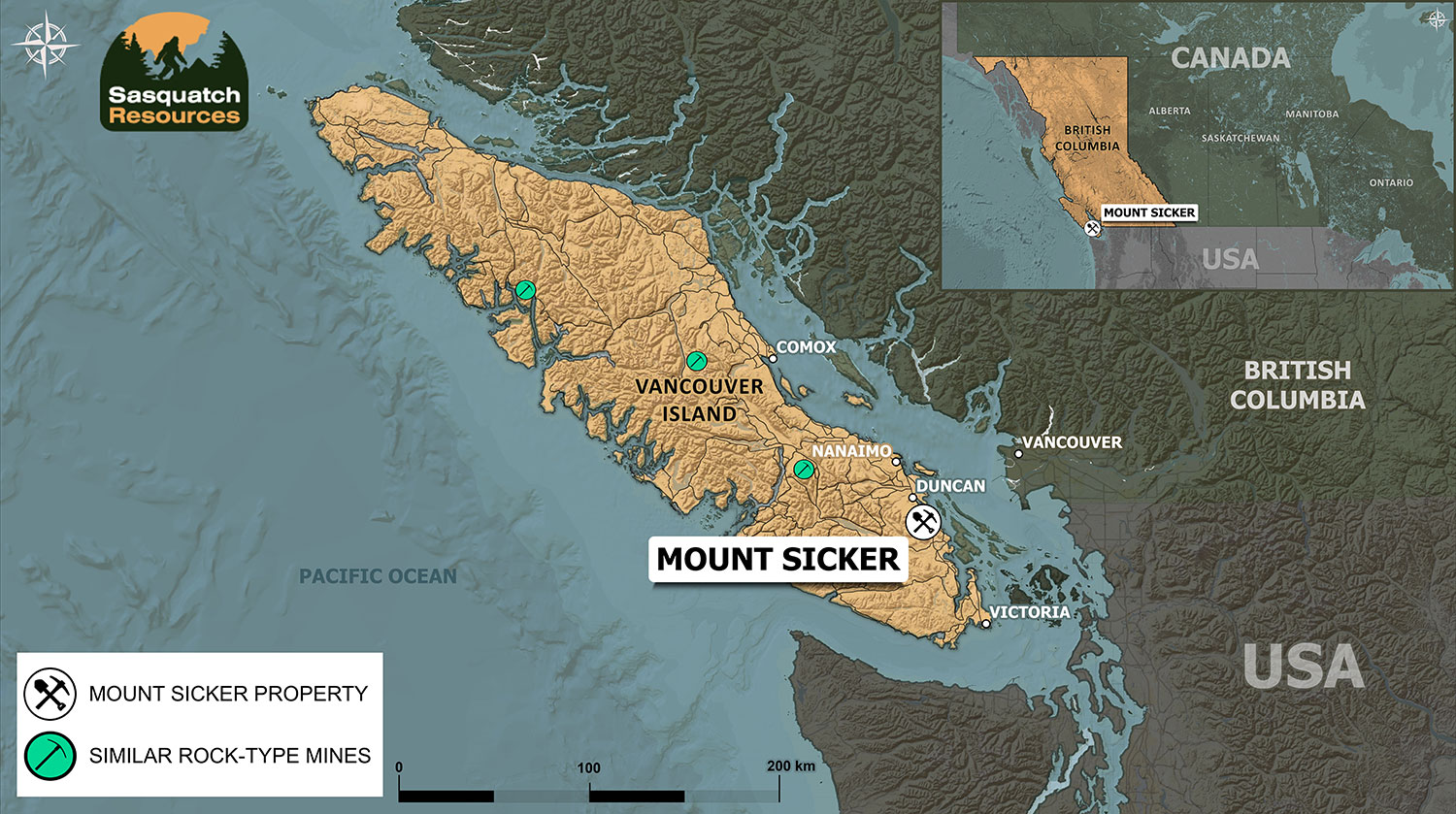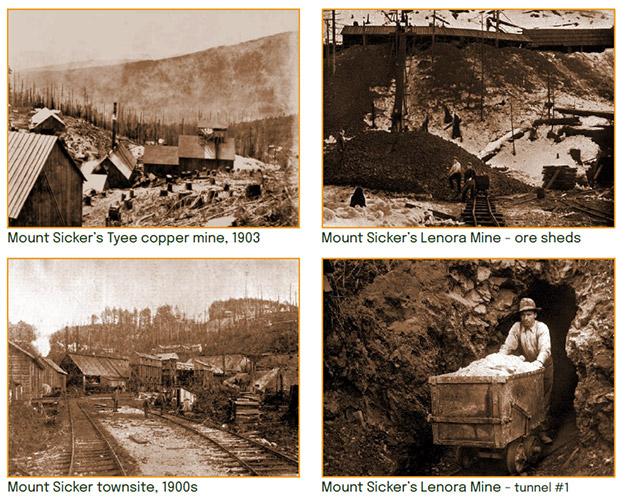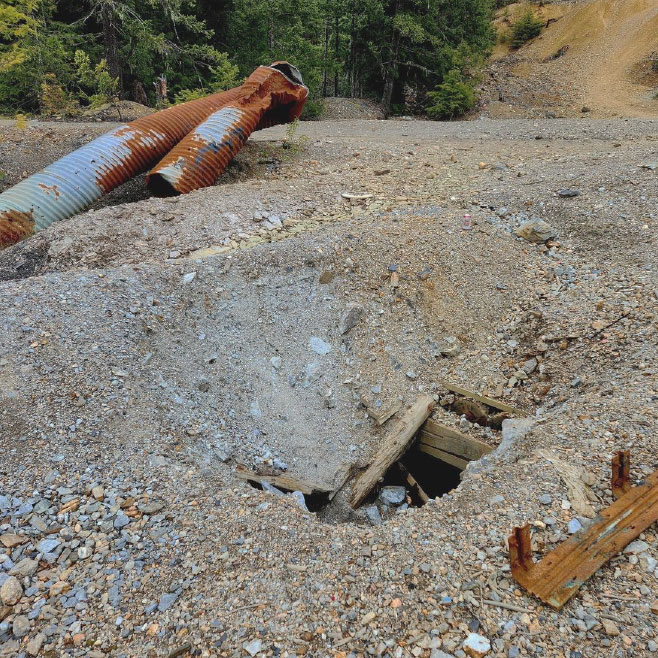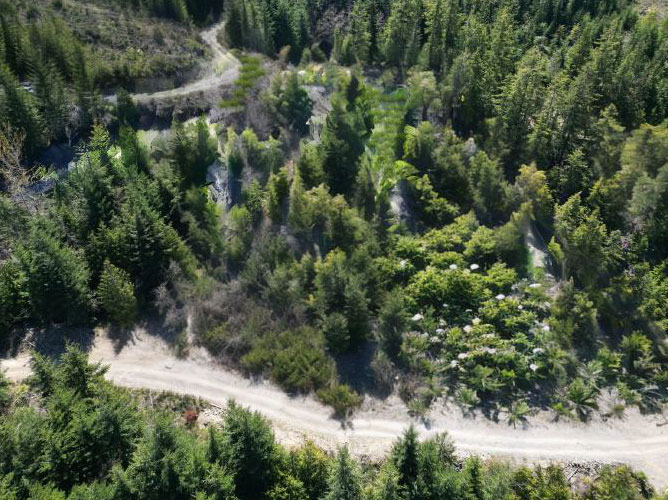Mount Sicker: copper, gold, silver, zinc prospect near Duncan, BC
SUMMARY
- Historical mining between mainly 1895-1915, with cut-off grades at 8% copper
- At least 300,000 tons of acid-generating waste rock and a number of other hazards were left behind
- A no-chemical, closed-loop ore sorting process would remove over 95% of sulphides from the rock, including gold, copper, silver and zinc, but also mercury, arsenic, lead and sulphur
- Potentially highly profitable, low cost with rapid implementation and completion
- No new “mining” would be done, hazards would be addressed, and the site would finally return to nature after over 100 years
MOUNT SICKER
DANGERS ON MOUNT SICKER
- Historic mining operations have left behind old workings and a number of potentially lifethreatening hazards
- The area is used extensively by locals and tourists for mountain biking, dirt biking, hiking, and other recreational activities
- As a part of any reclamation plan, known hazards would be addressed
HAZARD CLOSE UPS
*For example, in the event that adits are discovered to now be local bat habitat, there are special screens that will allow bats continued access while blocking human access
PROCESSING POTENTIAL
- 300,000 tons of waste or more, all in piles at surface and easily accessible
- Average values at surface of 1.86 g/t gold, 48.6 g/t silver, 1.22% copper, and 3.05% zinc (overall averages may be higher*)
- A 528kg ore sorting test-run returned high-grade material with 6.43 g/t gold, 180 g/t silver, 4.92% copper and 8.7% zinc
- Overall mass pull from waste expected to be in the 30-40% range, producing approx. 100,000 tons of high-grade material
- High-grade material will be trucked off-site and sold
.
*See Press Releases dated March 27, and October 9, 2024
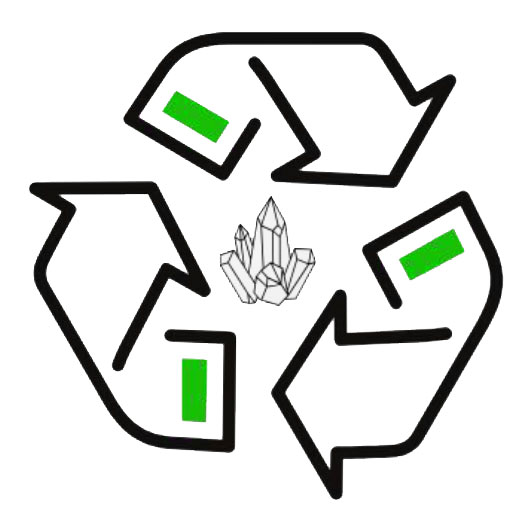
ACID TESTING

- Testing was performed on waste before and after being run through the ore sorting process\
- Existing waste scored 0.2 neutralization – highly acidic
- Post sorting, remaining waste scored 5.3-6.3, which is “normal”
- PH levels went from 6.3 to 7.2 – again, acidic to normal
- Overall, 95% of contaminants were removed, including lead, arsenic, mercury and sulphur (but also gold, copper, silver and zinc)
PERMITTING PROCESS
- Permitting process is underway
- It is assumed the Province has a vested interest in addressing the waste and hazards
- Sasquatch must submit detailed surveys, processing plans, and a reclamation/closure strategy, all from qualified professionals – which is all in process
- The site is currently a waste dump, with environmental and potentially life-threatening physical hazards
- The goal is to remove the high-sulphides, address the hazards, improve water runoff quality, and make the site safe for recreational use
- Community, local government and First Nations have expressed support

MOUNT SICKER

LOW CAPITAL INVESTMENT REQUIRED TO ACHIEVE CASH-FLOW
.
- Processing partners are being evaluated to provide technical support and the required ore sorting equipment
- Once permitted, first delivery of 10,000 tons of high-grade material to port could occur within weeks
- Significant cash-flow could be achieved with minimal initial capital, some of which could be obtained through grants, debt, or other non-dilutive means
MOUNT SICKER
WHY WE THINK THIS APPROACH COULD BE “THE MODEL” GOING FORWARD
Previous attempts to address waste-rock at old mining sites generally suggest small-scale processing on-site, which has issues:
- Requires MORE mining infrastructure, including new tailings ponds, which increases the mess
- Takes many years before ANY reclamation can be done
- Creates new environmental risks
Sorting and shipping of highgrade has the following big advantages:
- All done using mobile infrastructure, with no “new” mess – uses an existing off-site facility for advanced processing
- Can be completed within months so reclamation can begin almost right away
- Removes harmful contaminants with the valuable minerals, improving the water/soil quality and allowing new growth
THE MOUNT SICKER RECLAMATION PROJECT (and our other projects) COULD:
- Provide jobs for the Cowichan Valley Clean up a 125-year-old mess
- Result in the recovery of gold, silver, copper and zinc
- Repair a number of potentially life-threatening hazards
- Represent a rare ‘win-win’ environmentally and economically for the Cowichan Valley
- Serve as an example of how to deal with waste sites nationwide



